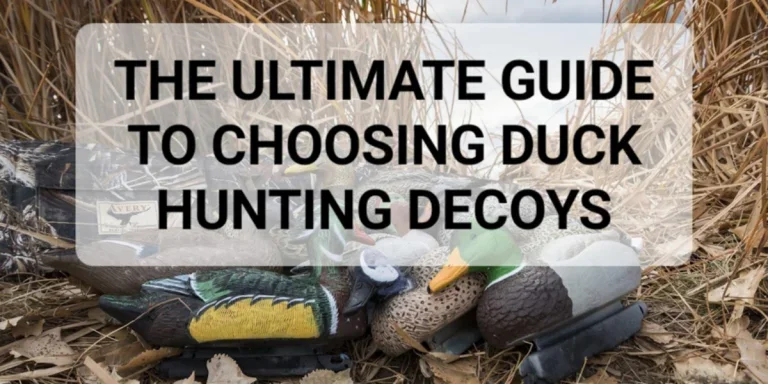Duck hunting decoys are wildly popular for duck hunters. This is because they make hunting wild ducks a significantly less daunting task—as they offer multiple strategies for hunters to lure large flocks of ducks before capturing them. Moreover, duck hunting decoys are one of the most popular tools for fleecing unsuspecting ducts into a hunter’s firing range.
Read on for everything you need to know about duck hunting decoys in order to select the best options on the market in 2024.
Table of Contents
What are duck hunting decoys, and how have they evolved?
Top 6 buying tips for duck hunting decoys
Wrapping up
What are duck hunting decoys, and how have they evolved?
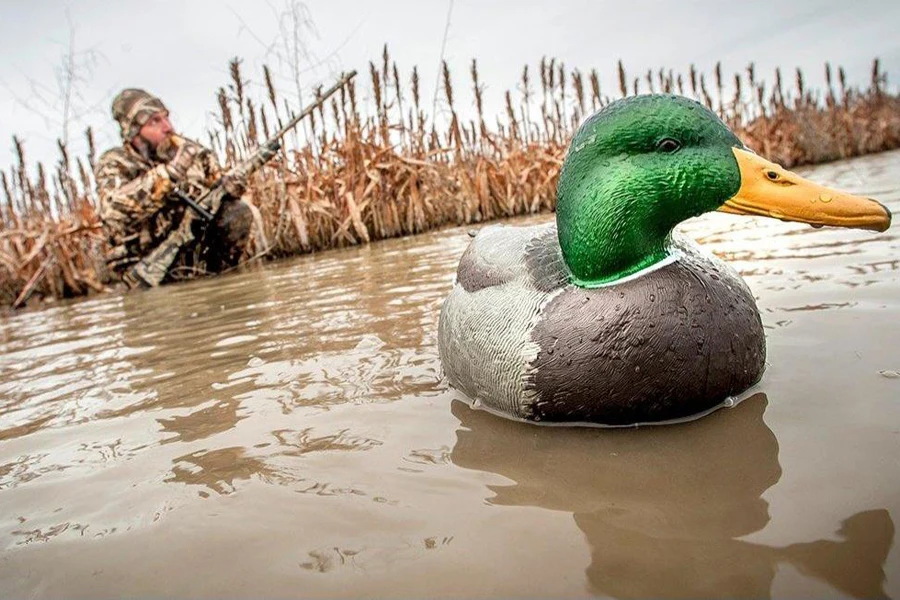
Duck-hunting decoys have long been a trusted tool among hunters. They help draw real ducks within shooting range during expeditions by mimicking various duck species’ physical appearance and behavioral traits. So, it’s no surprise they play a large role in the hunter’s strategy. But how do these decoys help? Hunters place them strategically in water bodies or suitable hunting grounds, and they draw the attention of ducks nearby.
Even though they were invented two thousand years ago, duck decoys haven’t remained in their traditional form. Over time, the understanding of ducks and technological advancements have influenced their evolution. Modern decoys now have features that make them more convincing. These updates include more intricate paint schemes, lifelike feather textures, and mechanisms that mimic movements (like gentle bobbing or fluttering wings).
Top 6 buying tips for duck hunting decoys
1. Duck decoy type
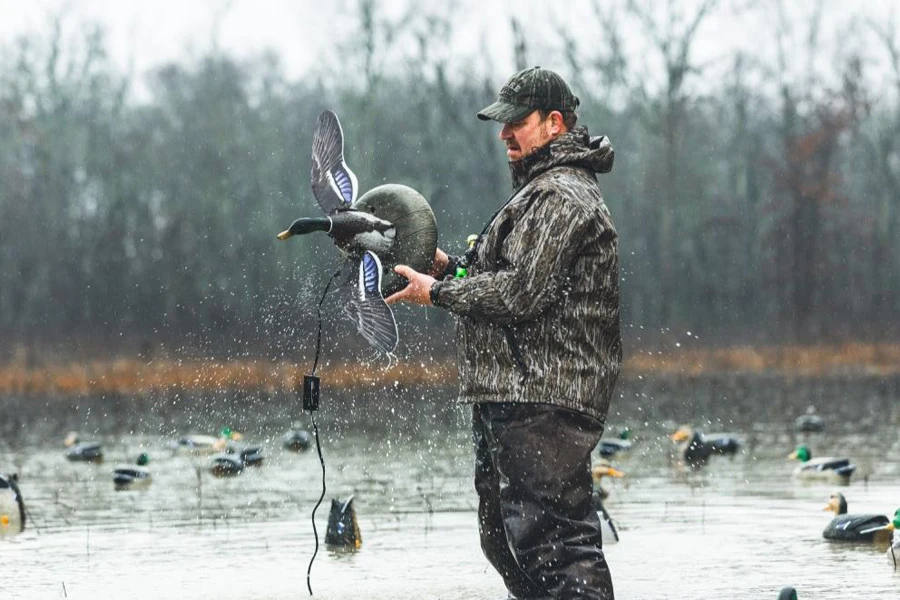
The first step hunters take when selecting hunting decoys is to choose their preferred type. Usually, they weigh several factors, including the target species, hunting environments, and preferred decoy scales, to craft effective strategies. For this reason, business buyers must understand the appeal of the two decoy types: species-specific and divers/puddle models.
Species-specific decoys
As their name implies, species-specific decoys closely resemble certain ducks. They mimic everything about these specific species, matching their shape, color, and how they stand or swim. For example, hunters going after mallards use decoys that look like their target species. They are also easy to find, meaning many hunters use these decoys.
To attract wood ducks, hunters use decoys resembling them to make their setups more believable. The same goes for redhead and pintail decoys—designed to mimic those ducks. Sometimes, hunters also use hen decoys to make the scene more realistic, showing a mix of male and female ducks as they naturally appear in a flock.
Divers vs. puddle ducks
Businesses must also know the difference between diver and puddle duck decoys, another aspect hunters consider when choosing their preferred type. Diver ducks like canvasbacks, scaup, and redheads prefer deeper waters, so hunters need decoys that imitate their behaviors for a convincing strategy. But when hunters focus more on dabbling ducks like bluebills and green-winged teals, they’ll need paddle duck decoys. These models are perfect for the shallow waters (like marshes and creeks) where these ducks rest and feed.
2. Size
Manufacturers make decoys in four sizes: miniature, standard, magnum, and super magnum. Standard decoys are the most common options, as they work fine for most expeditions. Magnum models are slightly bigger than standard sizes for one major reason. Some ducks may be attracted more to decoys that stand out, which most standard sizes can’t achieve. Lastly, super magnum decoys are the largest sizes—most hunters only use them for choppy waters with lower visibility for ducks.
Here’s a table showing more information on duck decoy sizes:
| Decoy size | Approximate dimensions | Best uses |
| Miniature | About 10-12 inches in length | This size is great for small water bodies, adding variety to spreads, and perfect for confidence decoys where realistic size is less important. |
| Standard | The average size of a live duck (14 to 16 inches) | This size is versatile for most hunting situations. |
| Magnum | 18 to 20 inches in length | This size is perfect for increased visibility in open waters and rough conditions and attracting attention from greater distances. |
| Super magnum | 22+ inches | This size is ideal for maximum visibility, and hunters often use them for geese or hunting on large bodies of water. |
3. Materials
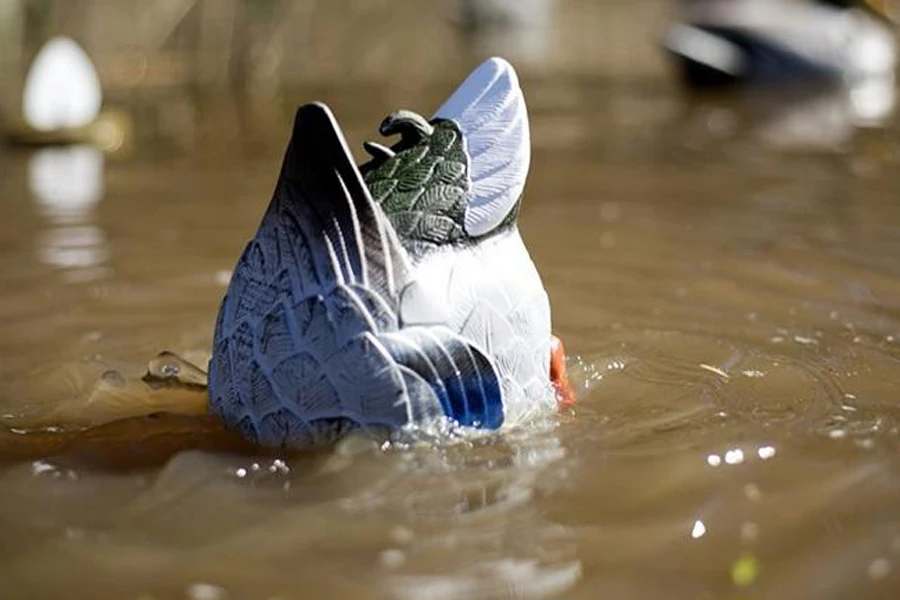
Choosing the most effective duck-hunting decoys also means considering various materials and construction techniques. Thankfully, each material has unique durability and a lifelike appearance, which can greatly influence its effectiveness. Here are more details on the different materials.
Wooden decoys
Wood is an amazing material for duck decoys. Usually, the top choice is cedar, but other similar water-resistant woods can also make realistic and durable duck decoys. Although manufacturers create them through manual carving (a time-consuming construction technique), many hunters love them for their unique, high-quality aesthetic that can endure generations if well-maintained. Additionally, their natural buoyancy makes wood excellent for floating decoys.
Foam-filled and hollow decoys
Foam-filled decoys provide better durability since they’re less likely to sink even if they get punctured. On the other hand, hollow decoys are lighter and more affordable, making them easier to carry around. However, they’re also more susceptible to damage and sinking.
Plastic decoys
Plastic decoys are the go-to choice for most hunters because they offer a good mix of affordability, durability, and realism. These lightweight decoys are typically made in large quantities, which helps to keep their costs down. Despite being mass-produced, they can still hold up well in tough conditions without getting seriously damaged.
Cork decoys
Cork decoys are the most realistic and lighter than their wooden counterparts. However, they are not as rugged as plastic or foam-filled alternatives. Regardless, they are quieter when bumped together, helping to maintain a natural atmosphere in the spread strategy.
4. Rigging and anchoring techniques
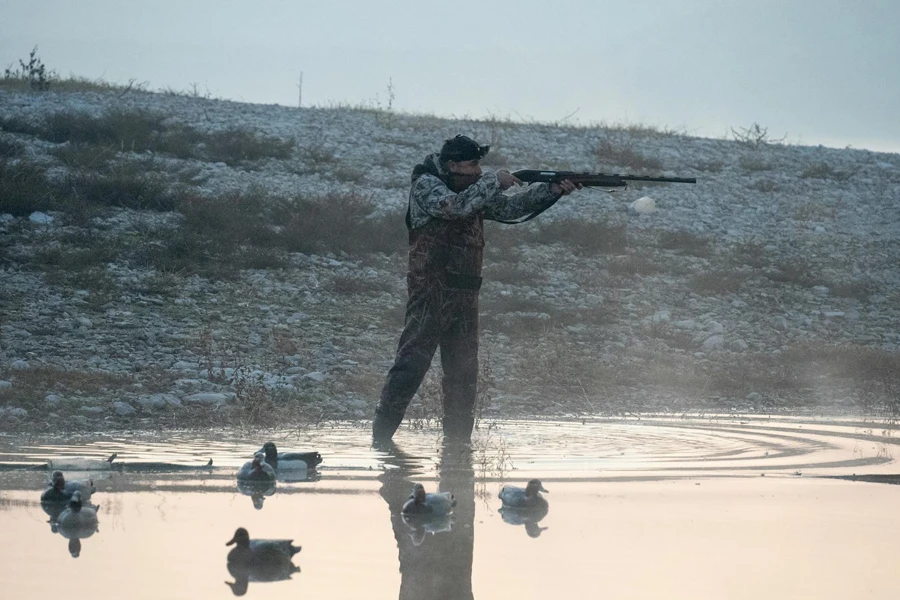
Rigging lines are necessary for securing decoys during hunting sessions. How? They help connect the duck decoys to weights that keep the spread anchored properly. More importantly, these lines come in different thicknesses and lengths, making them essential for business buyers to match them with the hunter’s preferred water depth and conditions.
For instance, shallower hunting spots will need shorter rigging lines. Conversely, hunters with their game in deeper waters need longer lines to keep their decoys stable—the anchor’s weight also matters. The perfect decoy should be heavy enough to stop drifting and easily set up or retrieve. Business buyers can offer two weight options.
- Scoop weights (4 to 6 ounces): These are popular for securing puddle ducks because they can snugly fit around a decoy’s bill.
- Heavier opinions (greater than 6 ounces): These weight anchors are perfect for windier conditions or rough waters, providing added stability to ensure decoys firmly maintain their position.
5. Keel-type

Decoys primarily feature two keel designs: water and weighted keels. Water keels let decoys float naturally, allowing them to move like real birds. These keels are usually lightweight and work well in calm or shallow waters.
On the other hand, weighted keels provide stability, especially in rough conditions, ensuring decoys remain upright regardless of the weather conditions. Selecting the appropriate keel type and weight combination for hunters is crucial for creating a convincing decoy spread—the goal here is to make ducks feel comfortable enough to approach.
6. Technological features
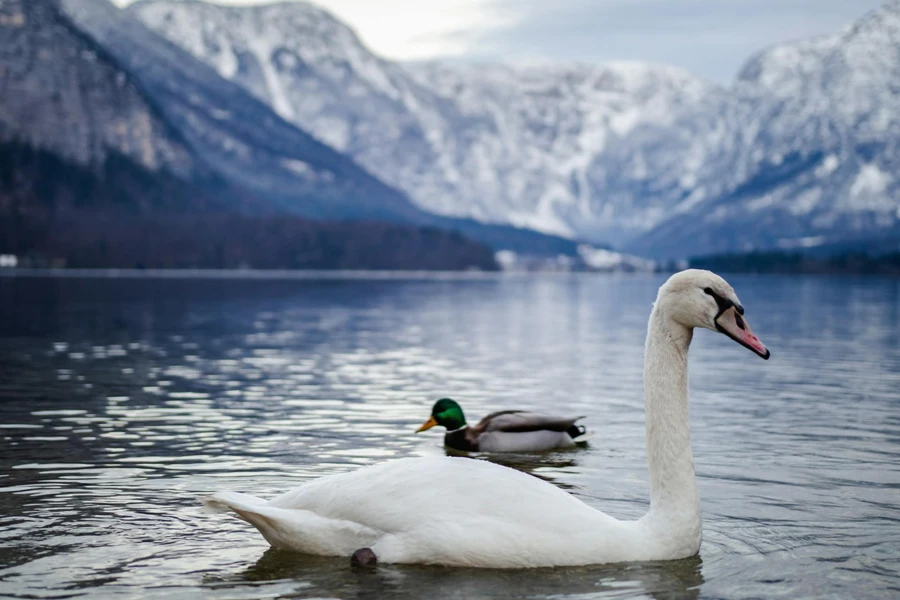
Duck hunting has evolved with technology integration, providing hunters with advanced tools and resources. Decoy apps and online platforms offer real-time weather updates, decoy placement tips, and simulated duck calls. However, adherence to local regulations regarding electronic calls is essential.
Spinning-wing decoys have revolutionized hunting by mimicking real bird motion, attracting attention, and simulating landing ducks. Remote-controlled models allow hunters to manage movement strategically.
Wrapping up
Having a duck hunting decoy is the perfect way to enjoy stress-free expeditions. Hunters only need to set them up and let these decoys do all the work, attracting prey for an easy kill. However, customers always have their specific needs in mind when choosing duck decoys. Businesses can use this guide to understand consumers’ wants and make better offers. Subscribe to the Sports category of Alibaba Reads to get similar top-quality content updates.
